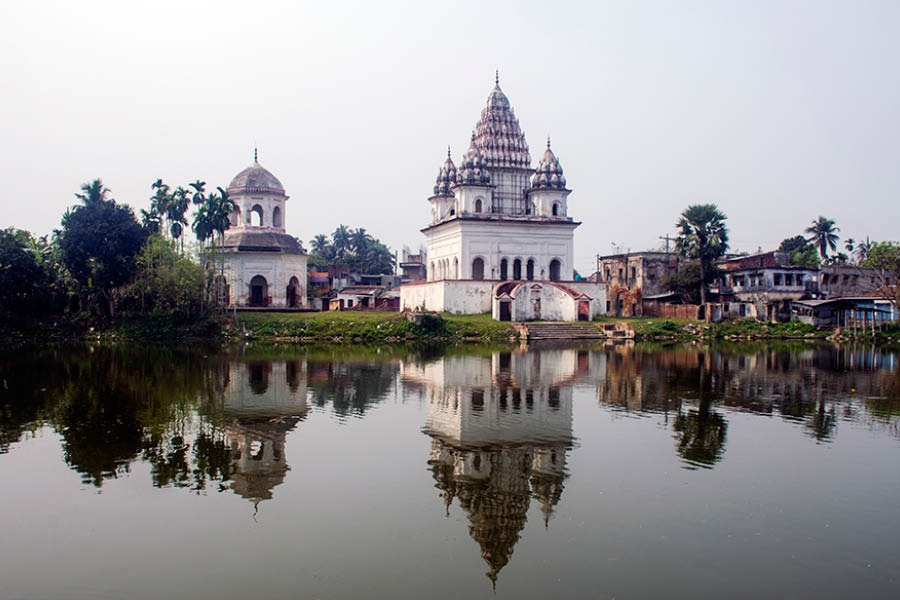Pandava Guhalu or Guttalu or Gutta is a Telugu phrase that literally translates into the cave of the Pandavas. According to the local folklore, the Pandava brothers of Mahabharat spent a certain portion of their exile period in this rock shelter, which is presently located about 55km north of Warangal.
However, anthropological evidence shows that the caves have been inhabited by humans long before the great epic was written.
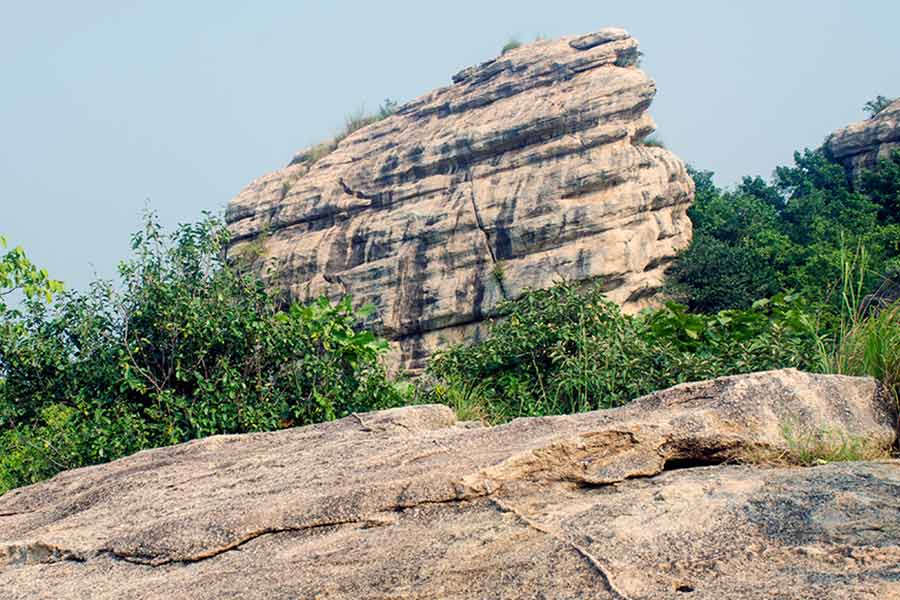
Stratified rock faces exposing millions of years of geological data
In 1990, the discovery of paintings on the rock wall confirmed that the cave was inhabited during the Mesolithic age (about 10,000 years ago). Today, the rocky region is complete with towering cliffs and projecting overhangs. It has received a geological heritage tag from the Geological Survey of India. Ever since the discovery the forest department of Telangana has been coming up with various activities to turn the geological wonder into an eco-tourism hub.
Prehistoric rock art
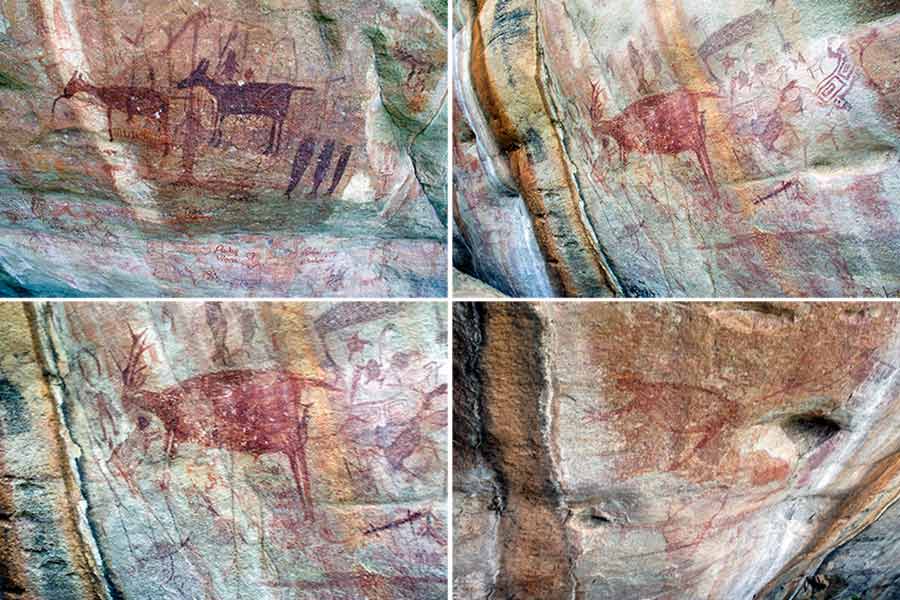
Ancient rock paintings from Pandava Ghallu
A cemented rock arch welcomes visitors to the geological wonder. A winding path leads to the interiors of the rock formation leading to a cliff edge. A short (about 10-12 feet) climb across a rock wall leads to a towering cliff face containing a series paintings dating back to the pre-historic age. The paintings mainly executed in reddish colour depict deer, fishes and monkeys along with butterflies and human figures. The artwork is complete with floral and geometric patterns. Overall, the painting depicts the lifestyle and hunting methods of the ancient occupants. Sadly, the ancient rock art has been vandalised, with newly added graffiti but the good part is that they are still few in number.
Stone arch
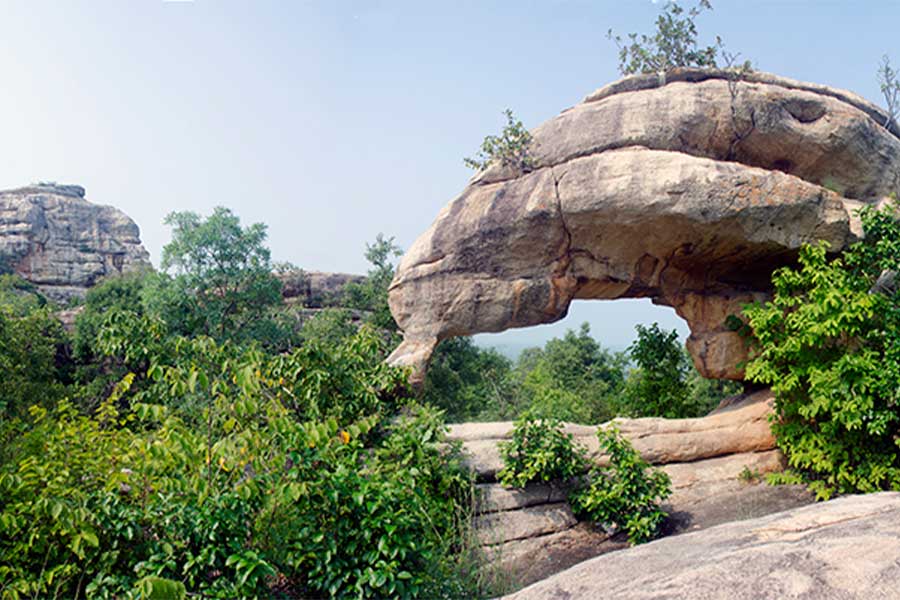
The natural rock arch of Pandava Ghallu
The place is a geological wonder. Over millions of years, the wind and water along with other elements of nature have curved out an array of strange shapes and patterns from the rock outcrop. This includes a rock arch, locally known as shila toron. This is a unique geological formation with the natural rock arch spanning over scattered boulders and rocks.
Through the undulating trail

Tourists make their way along the undulating trail beneath a canopy of trees and towering rock faces
A complex maze of trails connects the different geological wonders and other attractions of the rocky region. The undulating trail, complete with flights of uneven steps, passes beneath a canopy of trees and edges past towering cliffs. The trails lead to sheer vertical rock faces, projecting overhangs and an array of balancing rocks.

Negotiating the trail is no job as there are several bifurcations. This creates a complex labyrinth. Signages are far and wide and all of them are in Telegu. Even online translation apps didn’t come up with appropriate results and makes exploration difficult.
Cliffs, overhangs and more

Walls, cliffs, overhangs and peaks make Pandava Ghallu a geological wonder
Apart from the natural arch, the rocky region houses several other natural structures which have been sculptured by the wind and water for over millions of years. Pillar and bastion-like structures dominate the landscape. Giants overhang, which look more like caves, are also part of the rocky landscape. These stratified rock faces expose millions of years of geological data. Last of all, the sheer vertical cliffs provide a bird’s-eye view of the endless paddy field, which surrounds the rocky region.
Inscriptions, fortification and frescoes
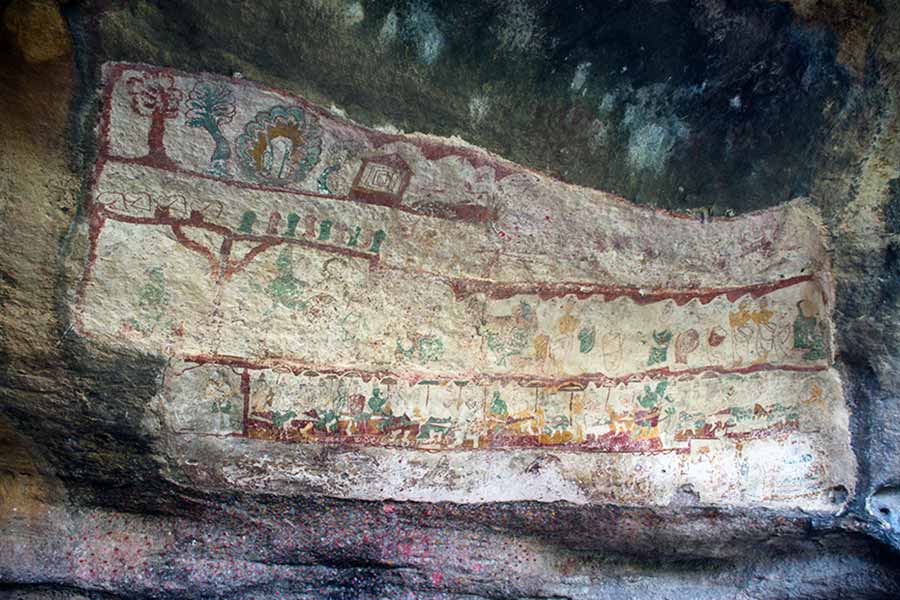
A late-medieval period fresco at Pandava Ghallu
Once the shelter of the ancient caveman the area also provided shelter to the later humans probably extending to the medieval period. An inscription from the Rashtrakuta (753-982 CE) period found in one of the caves justify the claim of later settlements. A stone gateway and part of a fortification justifies that the area was inhabited even during the medieval period. A fresco from the late-medieval period can also be seen beneath a rock overhang. Sadly, the multi-coloured fresco drawn on a white background has mostly faded away with the passage of time.
Upcoming tourism
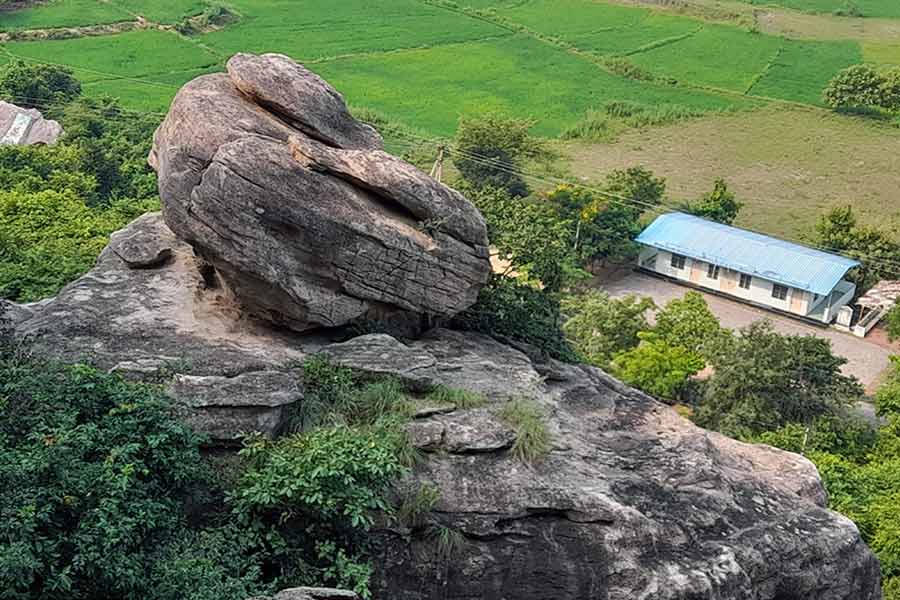
A bird’s-eye view from the upper reaches of Pandava Ghallu
In spite of the geological heritage tag, the rocky hills are barely visited by tourists. However, the state forest department has come up with some unique eco-tourism plan. The plan includes a host of adventure activities including rock climbing and rappelling, night camping and trekking.


